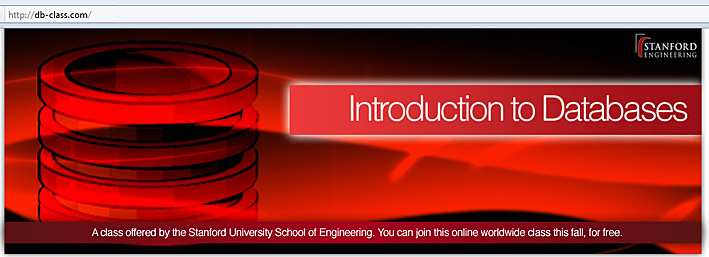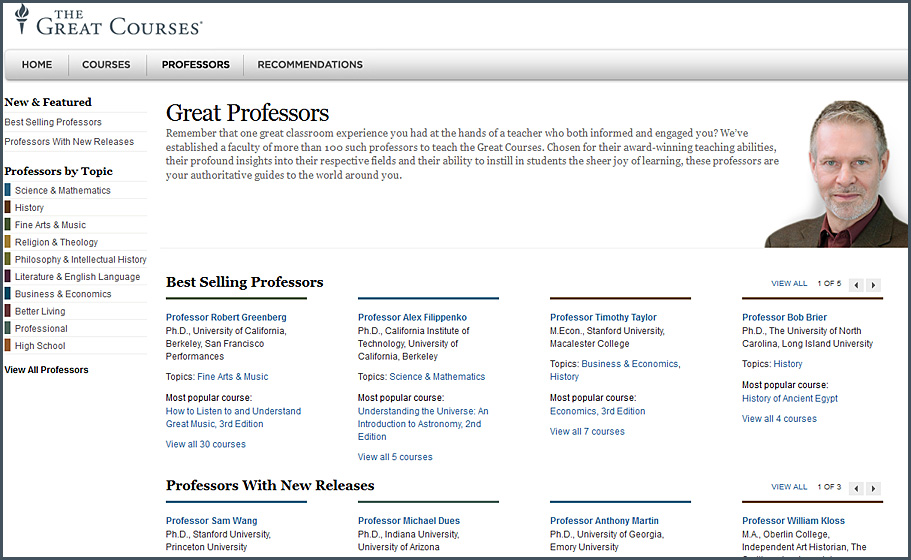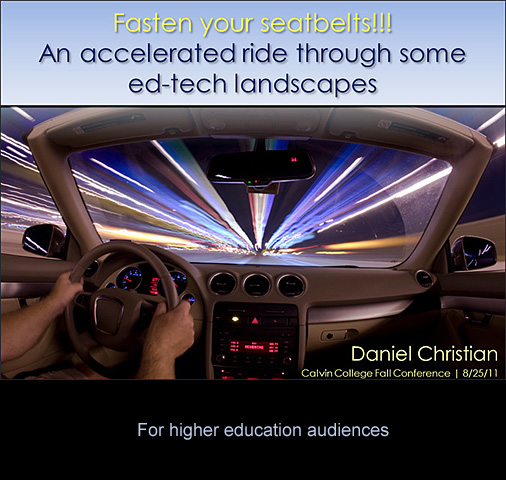Standardized tests for everyone? In the Internet age, that’s the wrong answer. — from The Washington Post by Cathy Davidson
“Culture eats strategy for breakfast.” – Peter Drucker
From DSC:
What a great quote — how true.
I used to discount the importance of culture — not anymore.
I originally saw this quote at brightspotstrategy.com.
Stanford University is offering Computer Science courses online, free to anyone — from geekosystem.com by Max Eddy
A bold experiment in distributed education, “Introduction to Databases” will be offered free and online to students worldwide during the fall of 2011. Students will have access to lecture videos, receive regular feedback on progress, and receive answers to questions. When you successfully complete this class, you will also receive a statement of accomplishment. Taught by Professor Jennifer Widom, the curriculum draws from Stanford’s popular Introduction to Databases course. A topics list and many of the materials are available here. More information about the Stanford course can be perused here. Details on the public offering will be available by late September. Sign up below to receive additional information about participating in the online version when it becomes available.
Also see the video at:
Introduction to Databases class by Stanford University
A bold experiment in distributed education, “Machine Learning” will be offered free and online to students worldwide during the fall of 2011. Students will have access to lecture videos, lecture notes, receive regular feedback on progress, and receive answers to questions. When you successfully complete the class, you will also receive a statement of accomplishment. Taught by Professor Andrew Ng, the curriculum draws from Stanford’s popular Machine Learning course. A syllabus and more information is available here. Sign up below to receive additional information about participating in the online version when it becomes available.
Also see the video at:
Machine Learning: About the class
From DSC:
Again, my question is…if these trends continue, what opportunities are presenting themselves? What threats are presenting themselves? What is our response? How will colleges/universities differentiate themselves in this developing landscape? If items like the below continue to grow…how do we respond?
Addendum later on 8/29/11:
- Also see iversity raises $1.6 million – Wants to bring Campus Experience Online — from edukwest.com by Kirsten Winkler
Abilene Christian U supports teachers through Digital Learning Institute — from convergemag.com by Tanya Roscorla
Excerpt:
This summer, Abilene Christian University in Texas hosted its first K-12 Digital Learning Institute for teachers. And this school year, the university will observe teachers’ lessons as they apply what they learned about mobile technology to their classes.
Reengineering IT in higher education — from campustechnology.com by John Waters
Excerpt:
Higher ed IT is going the way of the TV repairman, eventually becoming anachronistic maintainers of commodity systems–if university and college technology managers and chief information officers don’t reclaim their rightful place as innovators. So proclaimed William G. “Gerry” McCartney, CIO at Purdue University, who spoke to attendees at the annual Campus Technology 2011 conference last week in Boston. McCarthy said he wants to see nothing less than a new kind of higher ed hybrid, one that transforms colleges and universities into “producers as well as consumers.”
From DSC:
I have had the perspective for decades now that those organizations who utilize technologies the best will be the winners (sorry for the competitive way of framing this topic, but it’s true).
“Keeping the systems running” in the world of IT is important — but the strategic use of IT has arguably become more important as the Internet, changing landscapes, and budgetary pressures continue to disrupt higher education.
In the 21st century, if you want a successful organization, you must have at least one visionary technologist — who understands your business — on your organization’s decision-making board; if not, good luck to such an organization in the future. If your organization minimizes and underestimates the power of technology to disrupt your business, things may not turn out too good for your organization in the future.
Also see:
- Technology not a priority for most college administrators, report finds — from ConvergeMag.com by Tanya Roscorla
But how do you move forward with such an innovation, when there isn’t definitive proof that it will work? That is the key question educators and policymakers are grappling with.
Under the education priorities of President George W. Bush’s administration, the catchphrase “research base” was drilled into educators” heads when it came to new programs and initiatives. If it wasn’t research-based, it wasn’t worth adopting.
But technology innovations occur so rapidly that it’s often impossible to do scientifically based trials proving effectiveness before schools embrace new approaches. Think of social-networking tools, iPads, and e-readers. And what other new digital-learning tools might also emerge well before scientifically based research can justify their use in classrooms?
Also see:
- ‘Hybrid’ Charter Schools on the Rise — from Education Week’s Digital Directions by Michelle Davis
New charter school models are combining online-only learning and face-to-face instruction
From DSC:
From my 20+ years of experience with working with a variety of technologies, while there is an element of risk taking to implementing technologies, there are also enormous payoffs if organizations implement the appropriate technologies.
But how can we select and implement the most effective technologies? This is where we need to rely on our technologists out there and keep them growing in the knowledge of “the business”, not just the technologies. Tell them what you are trying to achieve, and they can greatly assist. No one can hit 100% — but good technologists can get you into the right game and into the right ballpark (if not exactly lining up the exact right players, which may change or take some tweaking).
NOTE:
Don’t rely on technologists who only see their jobs as keeping the systems running. Though we need technologists who keep the infrastructures up and running, at this juncture what organizations really need are visionaries who are knowledgeable about the needs of the business (as well as the technologies), and those who are willing to explore, experiment, and take some risks…i.e. to lead….to be instrumental in forming strategies and visions. The areas outside IT need to be aware of how critical technologies are becoming in their core strategies and plans. It’s not the same ball-game as it was. Those who use technologies strategically will survive and thrive.
It should be noted that there have been risks inherent in maintaining the status quo — a 20%-30% dropout rate (in K-12) across the United States is pretty risky too, at least in my mind.
From DSC:
A reflection on:
- “Why did Myspace fail?… Are you listening Microsoft, Yahoo, AOL, and Cisco? — from FastCompany.com by Mark Goulston
Don’t confuse a one-trick pony, first-mover niche player with a visionary company.
Excerpt (with emphasis from DSC):
The secret to visionary companies’ continued success was explained best what NHL great Wayne Gretzky stated: “A good hockey player plays where the puck is. A great hockey player plays where the puck is going to be.” What Apple and Facebook know and more specifically their founders/CEOs’ Steve Jobs and Mark Zuckerberg have in common is aspirational clarity. They appear to be able to see where the puck will be and into the future of what their market will not just want, but go ga-ga over and then they deliver it. Some may refer to that as their being market makers, but what enables them to make their market is that they can anticipate what will delight their customers and members that those people don’t even know will delight them.
From DSC:
This is why futuring, taking pulse checks on current trends, being in touch with your customers’ expectations (and future customers in the case of students), and scenario building are so important these days.
With the pace of technological change continuing to pick up, a healthy organization will constantly be looking to maintain its relevancy — to innnovate, to reinvent itself.
If you are not constantly reinventing yourself — as an individual or more collectively as an organization — your chances of staying relevant and marketable will likely decrease in the future.

Image by Daniel Christian

















